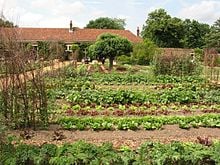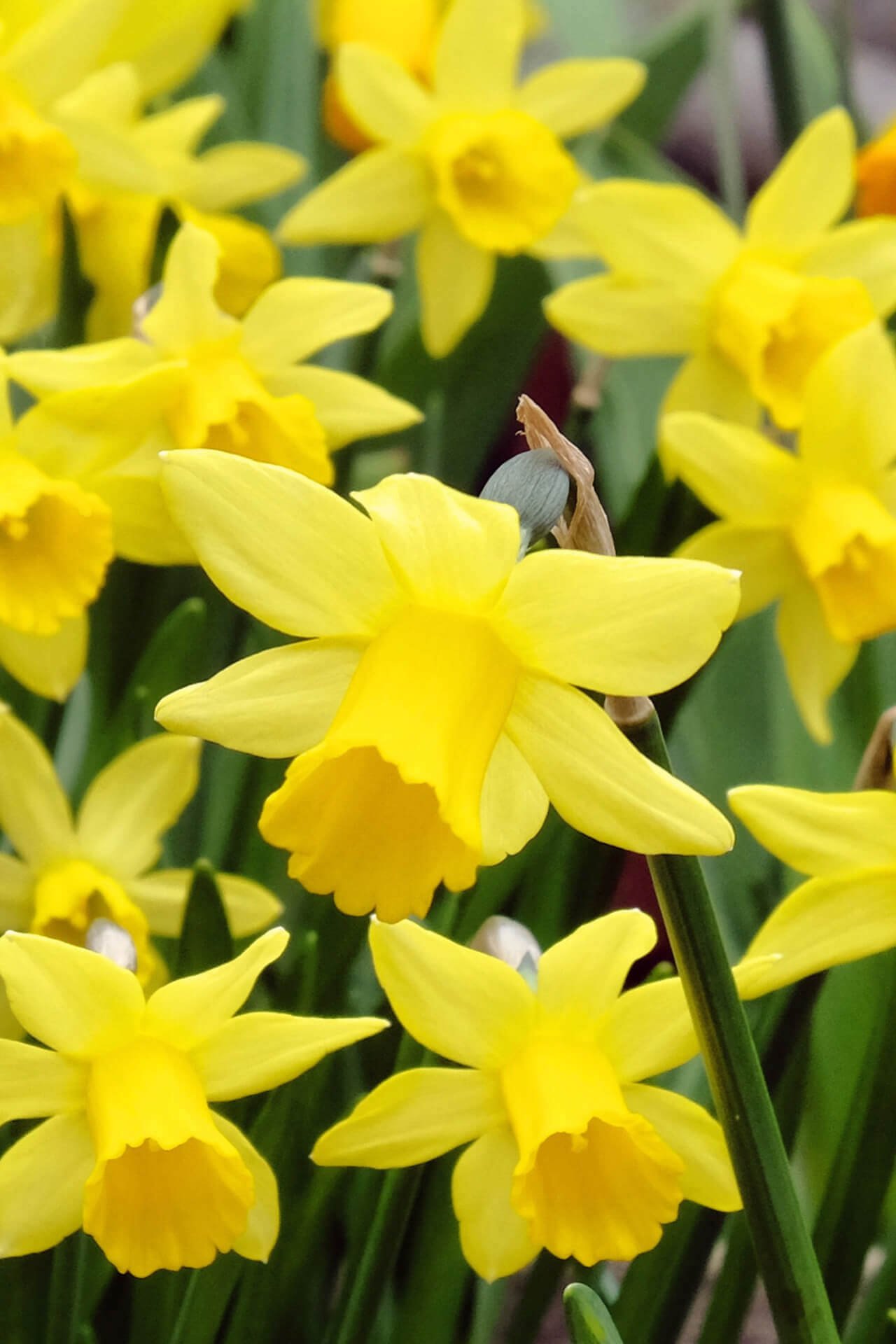Daffodils: Facts, Info, and Symbols
Daffodils, scientifically known as Narcissus, are a group of perennial flowering plants belonging to the Amaryllidaceae family. These charming and vibrant flowers are celebrated for their beauty, symbolism, and cultural significance. This article will explore various aspects of daffodils, including their facts, information, and symbols.
Facts and Information about Daffodils:
Origin and Distribution: Daffodils are native to Europe and North Africa, with a diverse range of species found across different regions. They have been cultivated for centuries and are popular garden plants worldwide.
Physical Characteristics: Daffodils typically have trumpet-shaped flowers with a central corona surrounded by six petal-like tepals. The color of the tepals and the halo can vary, ranging from shades of white and yellow to orange and even pink. The leaves are long, slender, and strap-like.
Cultivation: Daffodils are known for their easy cultivation. They thrive in well-drained soil and prefer areas with moderate sunlight. These plants are usually planted as bulbs in the fall for spring blooming.
Variety: There are over 50 different species of daffodils and numerous hybrid varieties. Each type differs in size, color, and flower shape, offering gardeners and enthusiasts a wide range of choices.
Symbolism and Meanings: Daffodils hold various symbolic meanings, including renewal, rebirth, and new beginnings. They are often associated with the arrival of spring and are seen as a precursor of warmer days after the cold winter months. Cultural Significance: Daffodils have been celebrated in various cultures throughout history.
Medicinal Uses: Some species of daffodils contain alkaloids used in traditional medicine for their potential to treat various ailments. However, these compounds can be toxic, and caution should be exercised when handling or consuming daffodil parts.
Art and Literature: Daffodils have captured the imagination of many poets and artists.
Symbols Associated with Daffodils:
Rebirth and New Beginnings: Daffodils, with their emergence in spring, symbolize the renewal of life and the start of a new chapter. They remind us that after a period of darkness and cold, there is always a fresh beginning full of opportunities.
Hope and Optimism: Daffodils' bright and cheerful appearance represents hope and optimism. Their vibrant colors and delicate petals inspire a sense of positivity and anticipation for the future.
Unrequited Love: The story of Narcissus, who fell in love with his reflection and could never attain his beloved, has led to daffodils being associated with unrequited love and the idea of longing for something unattainable.
International Symbols: Daffodils hold specific symbolic meanings in various cultures. The daffodil is the national flower in Wales, often worn on St. David's Day (March 1st). It symbolizes Welsh pride and identity. Similarly, in China, daffodils represent good fortune and prosperity.
Inspiration and Creativity: The presence of daffodils has inspired numerous artists, writers, and poets. Their elegance and beauty are metaphors for artistic expression and creative endeavors.
Easter and Resurrection: Due to their timing during the Easter season, daffodils are sometimes associated with the Christian concept of resurrection and the hope for eternal life.
Cultural and Historical Significance:
Literature: Daffodils have appeared in various works of literature, both as literal references and symbolic elements.
Art: Daffodils have been depicted in art across different periods and styles. They have been the subject of paintings, drawings, and sculptures, often representing natural beauty and the fleeting nature of life.
Gardening and Horticulture: Daffodils are a favorite among gardeners and horticulturists for their aesthetic appeal and low-maintenance requirements. Many garden enthusiasts eagerly await their blooms as a sign that spring has arrived.
Festivals: In various parts of the world, daffodil festivals celebrate these flowers. These festivals often feature displays of daffodil varieties, parades, and cultural events that highlight the flower's significance.
Conclusion:
Daffodils are not only a testament to the beauty and diversity of the natural world but also hold deep symbolic meanings that resonate with human emotions and experiences. Their association with renewal, hope, and new beginnings has transcended cultures and generations, making them more than a pretty flower.
As they continue to inspire poets, artists, and gardeners alike, daffodils remind us of the enduring connection between nature and human expression. In the tapestry of life, few symbols hold the power to evoke as much nostalgia and sentiment as the daffodil.
These delicate blooms, with their vibrant yellow petals and sturdy green stems, stand as a reminder of the unbreakable bond between nature and human expression. From ancient poetry to modern art, daffodils have inspired creativity and contemplation, bridging the human spirit and the natural world.<>Throughout history, poets and writers have drawn inspiration from the daffodil's grace and beauty.
Similarly, daffodils have played a pivotal role in artistic expression. Painters have long been captivated by the daffodil's vibrant hues and delicate form. Vincent van Gogh, the renowned post-impressionist artist, immortalized daffodils in his works, such as "Daffodils and Irises." His bold use of color and swirling brushstrokes imbued the flowers with a sense of movement and vitality, mirroring the ever-changing nature of human emotions. The daffodils in his paintings become more than just botanical subjects; they become vessels for conveying the depth of human sentiment.
Beyond the art realm, the enduring connection between daffodils and human expression can be found in cultural and spiritual practices. In various cultures, daffodils symbolize renewal, resilience, and life cycle.
In Chinese culture, for instance, daffodils are associated with good luck and prosperity. Their presence during festivals and celebrations illustrates the interplay between human aspirations and the beauty of nature.
In Christianity, daffodils have been linked to hope and rebirth, often appearing in religious artwork to represent the resurrection. These cultural and spiritual connections underscore how daffodils serve as a touchstone for the shared values and beliefs that shape human expression across different societies.
Building the Perfect Daffodil Bed
Daffodils announce the arrival of spring by filling gardens with their vivid blooms and attractive trumpet-shaped petals. Whether you've been gardening for years or you're just beginning, you'll find that growing a specialized daffodil garden brings vibrant colors that enhance your outdoor space. A stunning display of daffodils can be achieved year after year through strategic location selection, soil preparation, high-quality bulb choice, and proper care.
Select the location for your daffodil bed as your first step. Daffodils thrive best in conditions with full to partial sunlight, which includes exposure to six hours of direct sunlight daily. The best daffodil planting spot combines morning sunlight exposure with afternoon shade protection and becomes more crucial in warm climates. Good drainage is also essential. Choose planting locations that do not collect standing water because daffodil bulbs will decay when left in overly wet soil. For locations that struggle with water drainage, you should build a raised bed or mix the soil with compost or coarse sand to improve water flow.
After finding the ideal location, ensure the soil is ready for planting. Daffodils achieve optimal growth in loamy soils that maintain pH levels of 6.0 to 7.0, which are slightly acidic to neutral. Add multiple inches of decomposed compost to the soil to enhance its fertility while improving drainage and providing essential nutrients. The soil should be loosened to approximately 12 inches deep because this creates a better environment for bulb roots, which helps them develop solid foundations.
Choosing top-grade bulbs is the fundamental step for successful plant growth. Choose bulbs with a hard texture and no evidence of mold growth or unsightly marks. While larger bulbs usually result in larger flowers, smaller bulbs maintain their value when they remain healthy. Plant your bulbs during the fall, approximately two to four weeks before the ground freezes. Most regions' typical planting window during the fall season stretches from late September to early November. Appropriate temperatures enable bulbs to establish robust root systems without triggering early sprouting.
When planting, dig holes three times the bulb's height to reach depths between six and eight inches. Plant each bulb with its pointed end facing upward and maintain about six inches between bulbs. The bulbs need thorough watering after they are covered with soil to help settle the soil around them. Use straw, shredded leaves, or bark to mulch your bed, which will help control moisture levels while keeping the soil warm in winter and preventing weed growth.
After daffodils bloom in spring, maintain evenly moist soil while preventing excessive watering. You should let the leaves decompose naturally instead of cutting or bundling them. Next year's blossoms rely on the leaves to produce their food. Removing the foliage too soon will damage the bulb and decrease its flowering potential in future growing seasons. Early spring fertilization at the moment shoots appear promotes vigorous growth and vivid blossoms. Provide essential nutrients using either slow-release balanced fertilizers or fertilizers designed explicitly for bulbs.
Decide on your daffodil bed layout. Grouping plants into clusters or drift formations creates a visually striking natural display. Mix daffodils with other spring-flowering bulbs like tulips or hyacinths to achieve a harmonious color scheme. By planning correctly and selecting good planting locations, along with thorough soil preparation and diligent maintenance, you will enjoy vivid daffodil displays each spring, bringing joy to both gardeners and passersby.
Read more

Sunday, April 3Ground covers and vines provide multiple functional benefits for your landscape and add a unique aesthetic value.Barren patches can be enveloped with ground cover, bringing a coat of...

It is always the best time to grow vegetables in your garden, provided all the plants get the basic requirements, like soil, water, sun, and nutrients. You can always turn your backyard into a beau...



